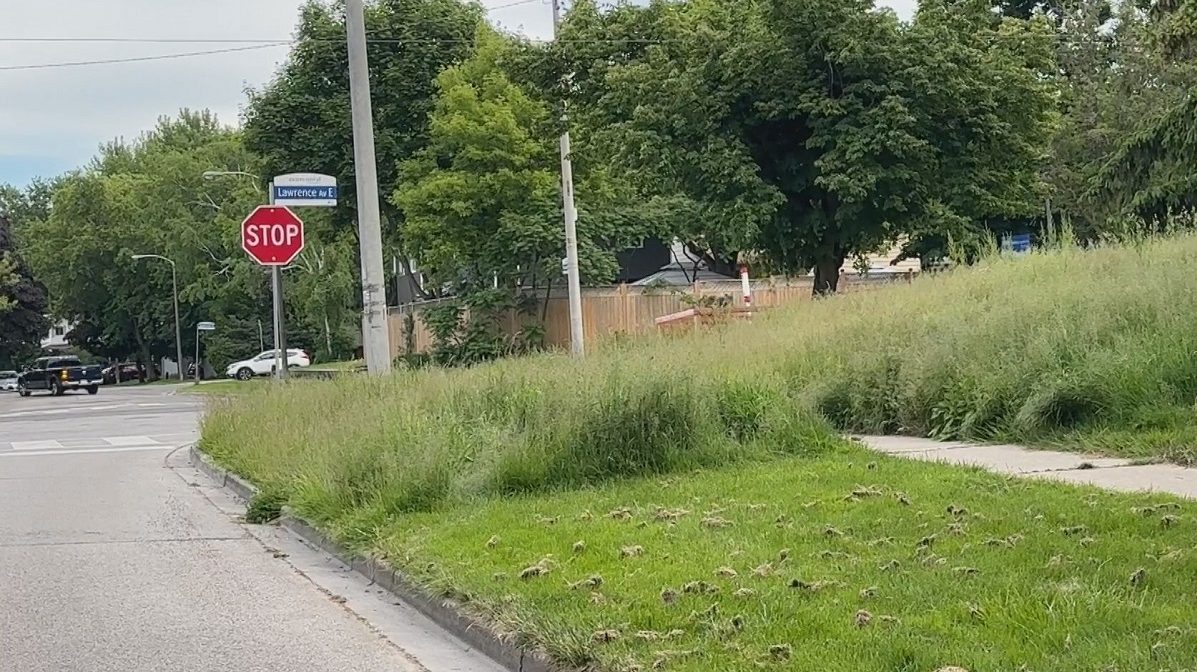Fitness
Toronto tick talk: How cutting your grass can help control pests, prevent Lyme disease

With an increase reported in the number of Lyme disease cases in Ontario and an apparent rise in tick reports, City of Toronto officials say it highlights a need to keep grass trimmed and take other precautions.
“The main concern would be that when you have tall grasses it’s potentially a place where ticks could be present and ticks, particularly black-legged ticks, are the main carriers of Lyme disease,” Dr. Howard Shapiro, an associate medical officer of health for the City of Toronto, said.
While touring the east end, CityNews saw many maintained private lawns but also came across several instances where the grass was well above what’s allowed under the Toronto Municipal Code. Some public properties were also not tended to, such as a boulevard along Lawrence Avenue East and outside the Rouge Hill GO Transit station where grass reached at least 20 inches in spots.
There were instances where the grass was higher than three feet even though the maximum height for lawns is eight inches.
According to eTick.ca, the primary reporting platform for monitoring insects across Canada, of the more than 1,100 public black-legged tick sightings in Ontario, more than 600 ticks were discovered on human hosts.
Public Health Ontario data confirmed there were 60 reports of Lyme disease in Ontario so far in 2024. The average year-to-date is 43.
What’s the City of Toronto enforcement process for long grass?
Joe Magalhaes, a City of Toronto municipal licensing and standards (MLS) district manager, said there were more than 1,630 complaints filed so far this year (as of the end of May) through 311 for long grass on private properties. In 2023, there were almost 6,500 complaints.
He said the requirements for grass and restricting certain plants are in place for two reasons.
“It’s for appearance obviously and also to ensure that people aren’t maintaining a garden that poses a threat to human health or animals,” Magalhaes said.
After an issue is filed with 311, Magalhaes said MLS staff typically follow up with the complainant within five days and go out shortly after that.
He said if there’s a violation of the bylaws, property owners are given up to two weeks to comply with a notice.
If the issue is not dealt with, MLS staff can give a time extension if needed. If there still isn’t compliance, a third-party contractor will be brought in and the costs will be added to the owner’s property tax bill. Property owners can also be charged under the Provincial Offences Act, which could result in fines at court if convicted.
Magalhaes said MLS staff can’t issue orders against public or government entities for cutting grass, adding all they can do is education.
If maintaining grass is getting more difficult, he encouraged property owners to think about converting grass to native plants or natural gardens so long as sidewalks aren’t being obstructed. Magalhaes said native plants can help create needed habitats for pollinators.
Protecting against ticks
Shapiro said Lyme disease can present and develop differently for each person.
“It can be particularly serious if you don’t treat it but it starts off sort of like any type of infective illness where you have fever, headache, chills, aches. Eighty per cent of people will develop a rash and this would happen anywhere from about three days or so to a month after a tick bites a person,” he said.
“Usually people seek medical care and if it’s properly treated, it ends there. However, sometimes it’s not recognized or treatments aren’t effective and people can go on to have more serious problems involving their joints, so very bad arthritis. They can get heart problems.”
Shapiro suggested doing the following to protect against ticks, especially if you’re in naturalized areas:
- Avoid brushing against tall grass, vegetation and walk in the centre of pathways
- Fully check yourself, children and pets for ticks
- Wear light-coloured clothing to help with tick detection
- Use Health Canada-approved insect repellent
- Keep pets on leashes
- Take a shower after returning home since “it takes a while for the ticks to get attached”
With files from Lucas Casaletto and Eva Fragiskatos


)






